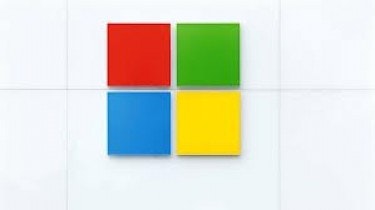
Microsoft Corporation (NASDAQ:MSFT) took its biggest step toward consolidating the fast-growing PC industry under its operating system on May 22, 1990, when it released Windows 3.0 to the public. It had been five years since Microsoft’s first Windows release, which introduced a graphical user interface to compete with Apple Inc. (NASDAQ:AAPL)‘s Macintosh systems. However, earlier versions of Windows were barely used — Microsoft Corporation (NASDAQ:MSFT) itself didn’t introduce Excel on the platform until 1987, and Word wasn’t available on Windows until version 3.0 was nearly finished. That finally began to change with the launch of 3.0, especially once Windows 3.1 hit the market two years later.
Key to 3.0’s success was Microsoft Corporation (NASDAQ:MSFT)’s ability to convince many early PC-makers to pre-install the operating system on machines before they reached consumers. Although International Business Machines Corp. (NYSE:IBM) and Compaq (now part of Hewlett-Packard Company (NYSE:HPQ)) refused to commit to pre-installs — International Business Machines Corp. (NYSE:IBM) was still trying to push its 3-year-old OS/2 (an early Windows competitor), and Compaq’s general policy opposed all pre-installs at the time — Microsoft Corporation (NASDAQ:MSFT) still managed to assemble a lineup of 30 computer makers, virtually none of which still make computers today, to include Windows 3.0 on machines out of the box. The $150 operating system sold 100,000 copies in its first two weeks on the market, and 4 million PCs were running Windows 3.0 by the end of its first year on the market.
Windows 3.0 didn’t kill off the Mac — Apple Inc. (NASDAQ:AAPL)’s market share actually grew slightly during the early ’90s as second-tier systems like the Amiga and the Atari died off — but it nevertheless closed the door on any real competition for the International Business Machines Corp. (NYSE:IBM)-compatible PC in homes and offices. Windows 3.1 would sell at a brisker pace, with 3 million copies moved in its first three months, and Windows 95 provided all the fuel necessary to send Microsoft into the stratosphere: 40 million copies sold in its first year alone.
The difference between Microsoft Corporation (NASDAQ:MSFT)’s stock and Apple Inc. (NASDAQ:AAPL)’s over the remainder of the turbocharged 1990s is telling: From the launch of Windows 3.0 to the end of the decade, Microsoft shareholders enjoyed a return of about 5,800%, while Apple shareholders saw only 160% price growth. This underwhelming performance failed to beat the Dow Jones Industrial Average (Dow Jones Indices:.DJI), which gained 300% over the same time period, and which would induct Microsoft Corporation (NASDAQ:MSFT) to its ranks right at the close of the decade — one of its worst decisions, for the software maker would depress the index for more than a decade afterward. Windows 3.0’s success also nearly undid IBM by rendering OS/2 irrelevant, resulting in the largest loss in corporate American history by 1992.
Who owns flight?
Behind many great inventions is often a fierce patent war. Few were so consequential to American enterprise as that waged by the Wright brothers, who had filed a patent on their flying machine months before making the first successful flight in Kitty Hawk. When it was granted on May 22, 1906, it became a cudgel the brothers would use against all competitors. Wilbur Wright opined several years later: “It is our view that morally the world owes its almost universal use of our system of lateral control entirely to us. It is also our opinion that legally it owes it to us.” It’s no wonder that they so fiercely defended the patent, if they believed in the originality of their creation with such religious fervor.
